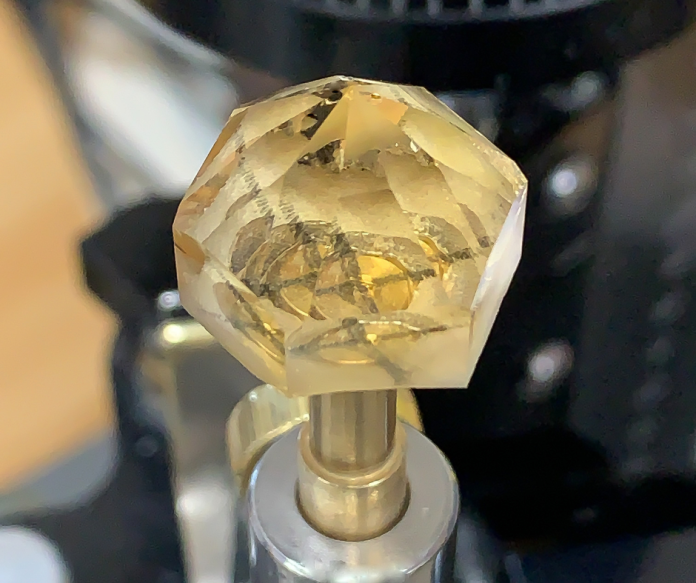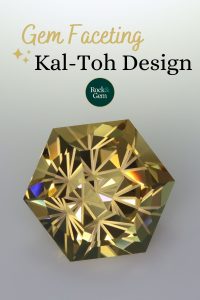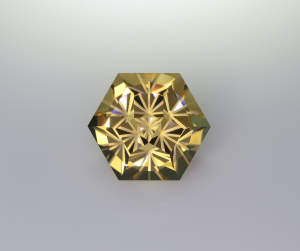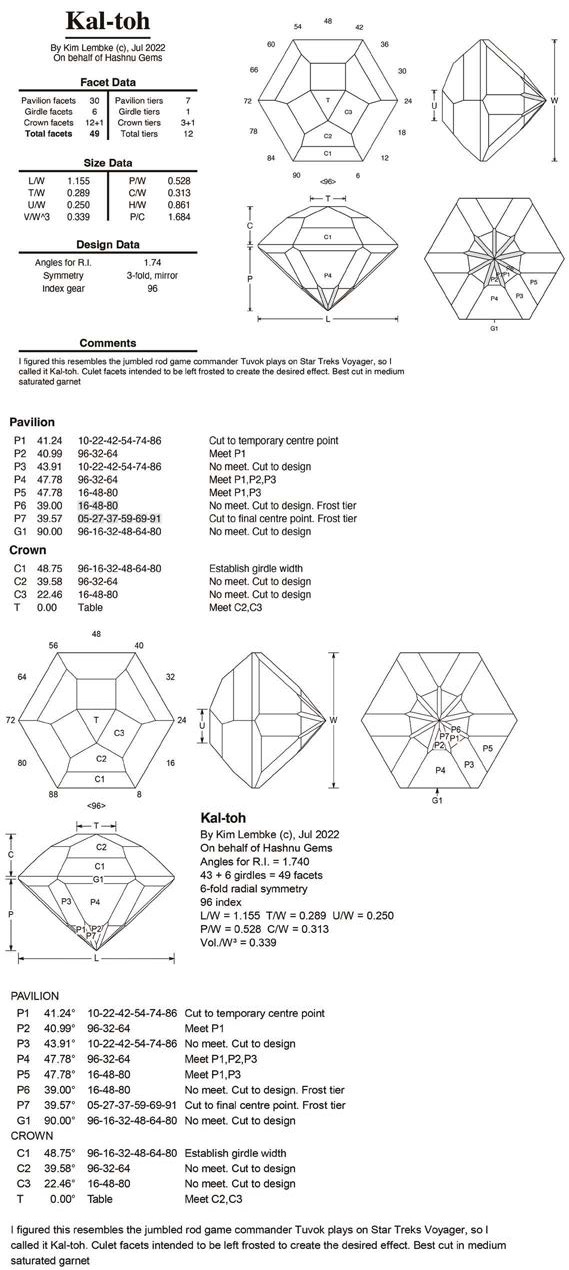
Gem faceting Kim Lembke’s design, Kal-toh, is both fun and challenging. The design is based on the Star Trek magnetic jumble rod game of strategy played by Tuvok. The design is a challenge because of the absence of meet points — the junctions where facets meet and guide the gemstone cutter in systematically aligning the gemstone. Without meetpoints, the faceter will have to eye the position and relationship of the facets. This can be unnerving for those used to relying on the geometric structure of meet-points. To quote Tuvok, “We often fear what we don’t understand. Our best defense is knowledge.”

Tips For Cutting the Kal-Toh Design
1. Since we do not have the luxury of meetpoint faceting in this design, try to keep the visual proportions that Kim shows in the diagrams. Do not worry about getting the proportions perfect on rough grit laps, but work on getting the proportions of the facets closer each time you go to a new lap/grit.
2. Choose the optimal material to cut. Kim Lembke suggests that it be faceted in medium saturation garnet. I decided to facet the gemstone in golden citrine to give it a more dramatic effect by adding some extinction to the gemstone. Extinction is when the gemstone loses light and we see dark areas in the gemstone. To quote Tuvok, “Without the darkness, how would we recognize the light?”
Although this worked for my purposes, I would suggest following Kim’s suggestion and using medium saturated garnet or YAG, Yttrium Aluminum Garnet, a synthetic gem material used for optic and laser technology.
3. If you are a North American gem cutter, facet G1 after P2. Kim is from Australia and I have noticed that Australian gemstone designers tend to use a different cutting sequence on the pavilion. Their North American colleagues usually facet the girdle early in their gemstone cutting sequence. Regardless of when you facet the girdle, keep in mind that the crown is very high on this gemstone and you should leave enough room to cut the girdle and crown. The pavilion is the same depth as the girdle and crown both are high.
4. When faceting the pavilion, I do not cut P6 and P7 until I have polished all the other pavilion facets. This gives me the ability to be more precise with putting in the frosted facets of P6 and P7. I use a worn-out 1,200-grit lap to cut P6 and P7 to give me the frosted facets and dramatize the difference between these facets and the polished facets. I cut my frosted facets in my example in a similar proportion as shown in the diagram, however, I think a variation of thinner facets or polished facets for P6 and P7 would be a welcome variation.
5. When cutting the crown, the only meet points you have are on the table. Your table size will depend on the depth that you cut C2 and C3. The deeper you cut these facets (or the smaller C1 is) the larger the outcome of your table. Gauge the table size when cutting in C2 and C3 with your rough grit laps and refine your facet sizes as you progress with your finer grit laps. Keep an eye on the place and size of the table.
|
Give it a Try!
Kal-toh is a challenging gemstone to facet. In the game, “Kal-toh is to chess what chess is to tic-tac-toe” said Tuvok. I hope that you give this gemstone design a try and that my suggestions make the faceting experience a pleasant journey. Keep in mind that a no-meet-point design also gives you the ability to play with the proportions and the gemstone’s final outcome. As Captain James T. Kirk said, “Without freedom of choice, there is no creativity.”
This story about gem faceting the Kal Toh design appeared in Rock & Gem magazine. Click here to subscribe. Story by Mark Oros.
|
|


 GEMSTONE DESCRIPTION
GEMSTONE DESCRIPTION










